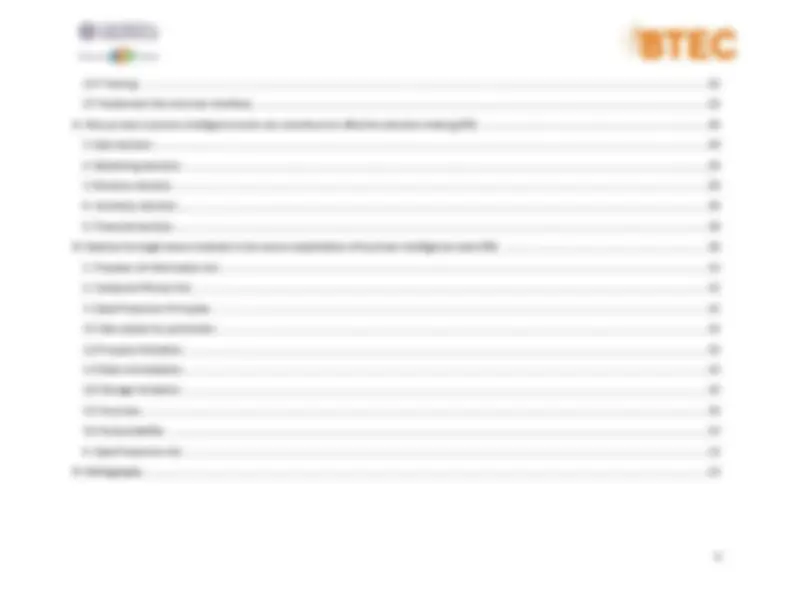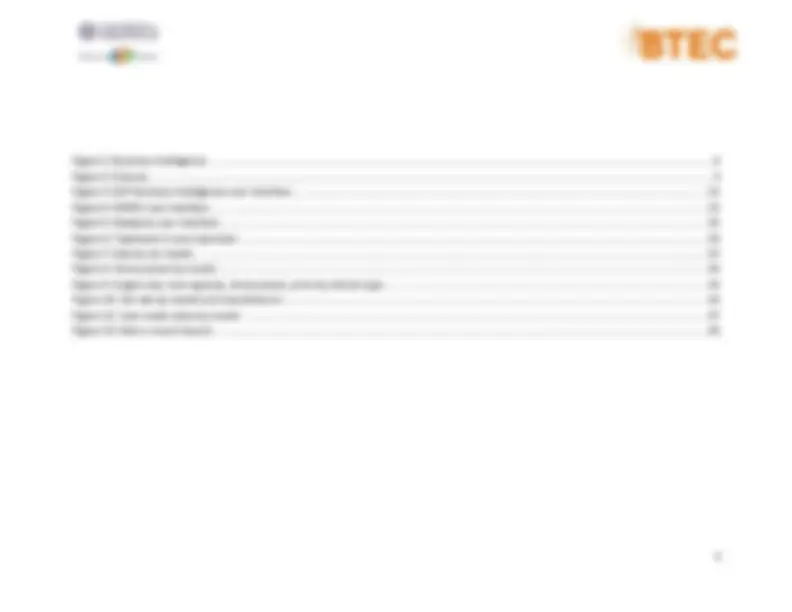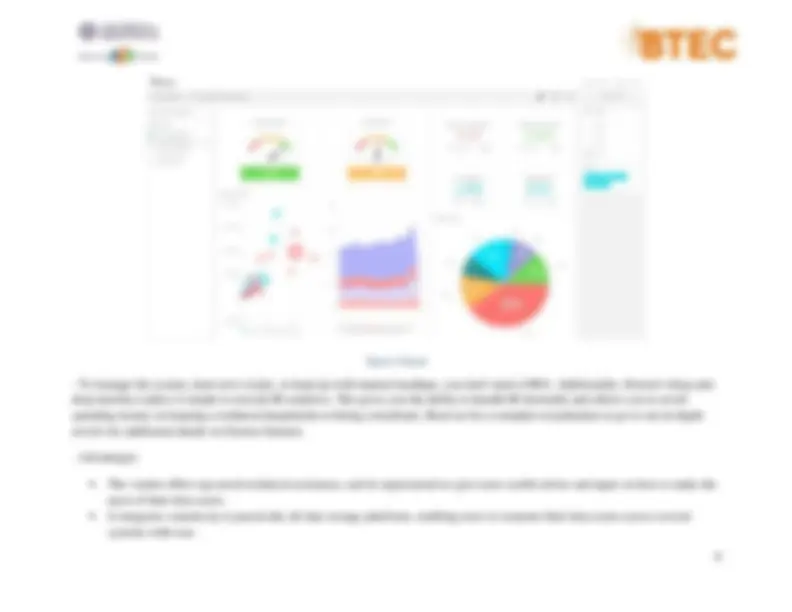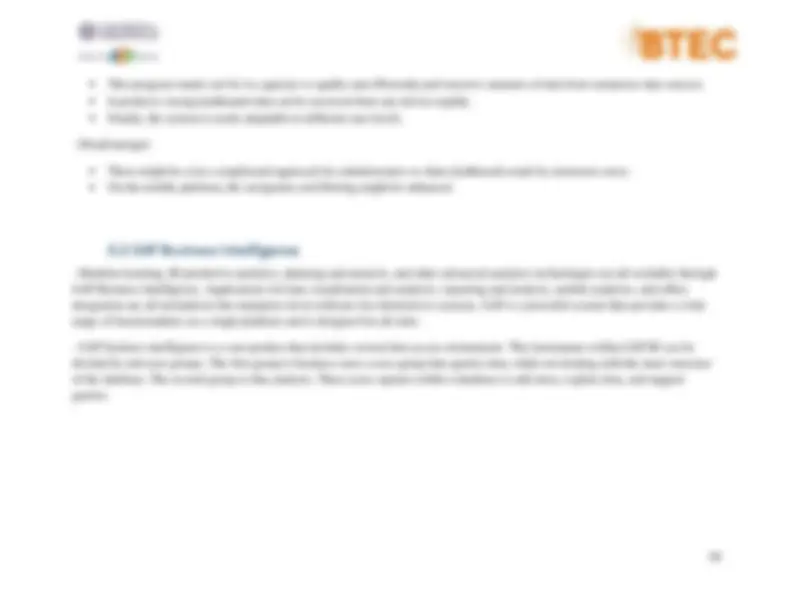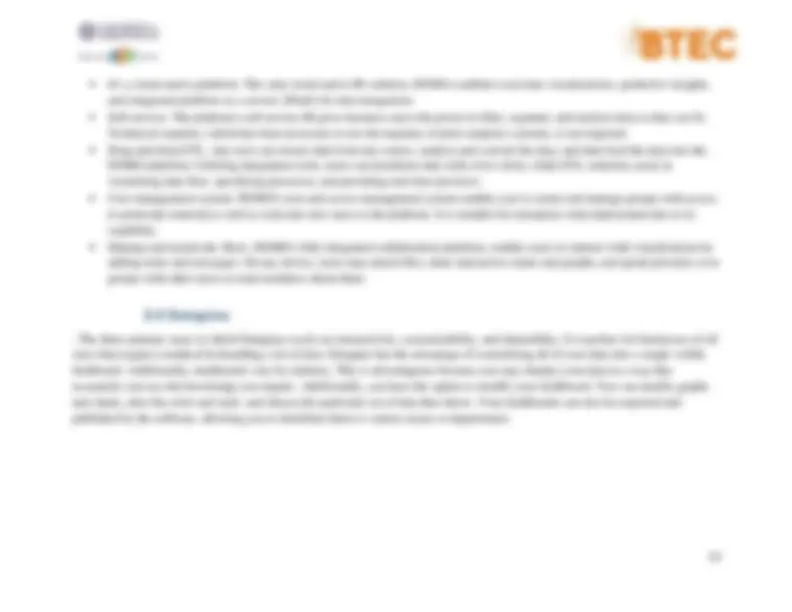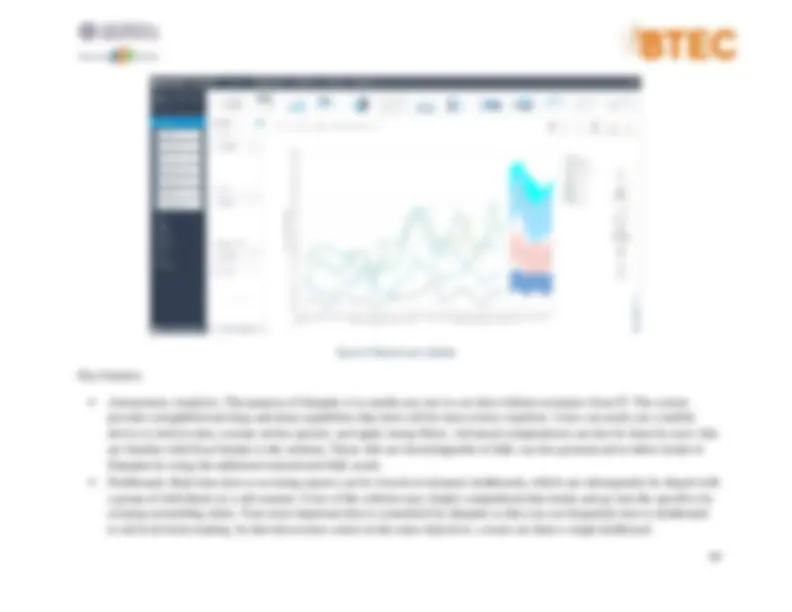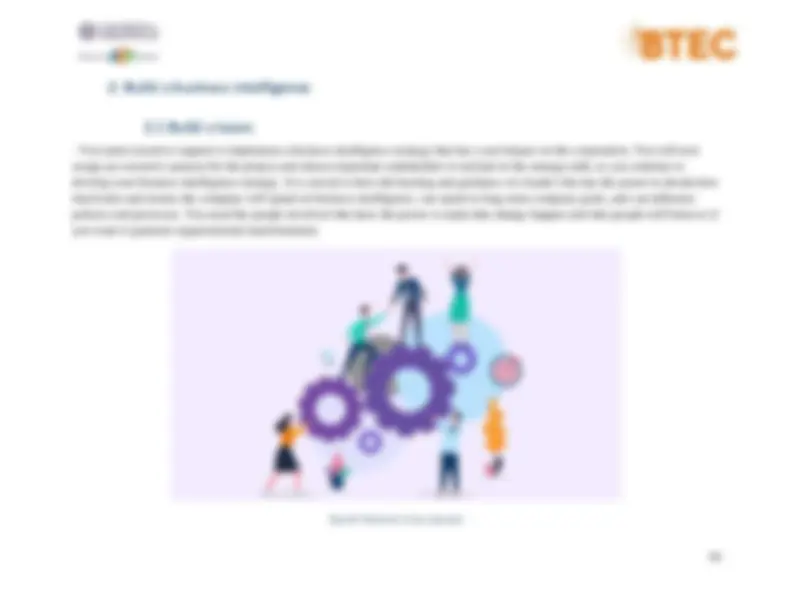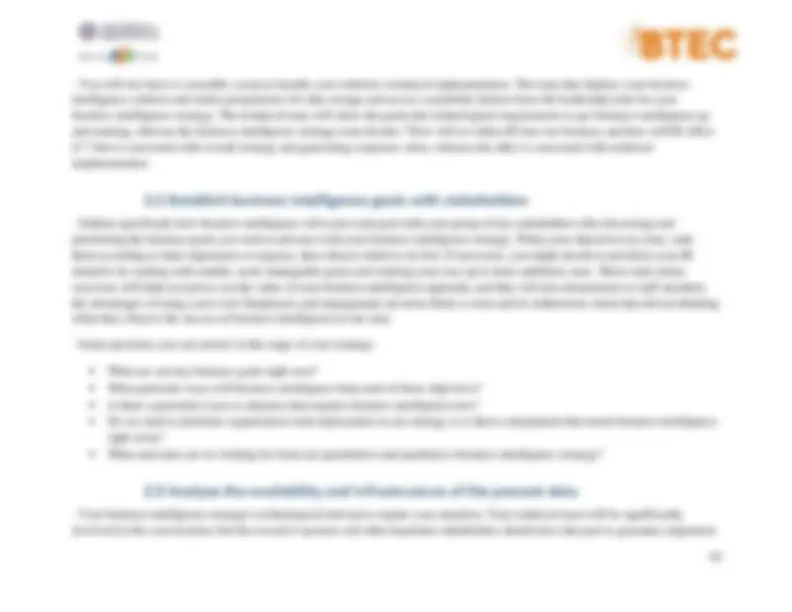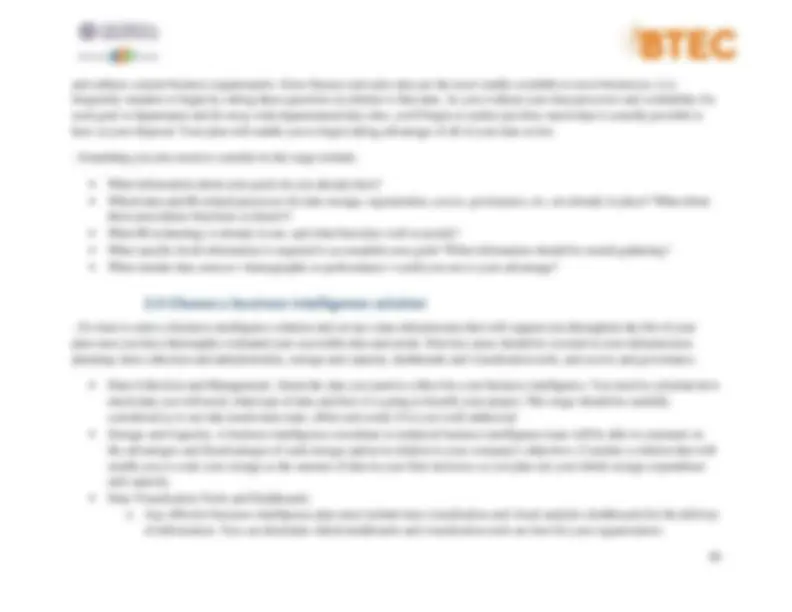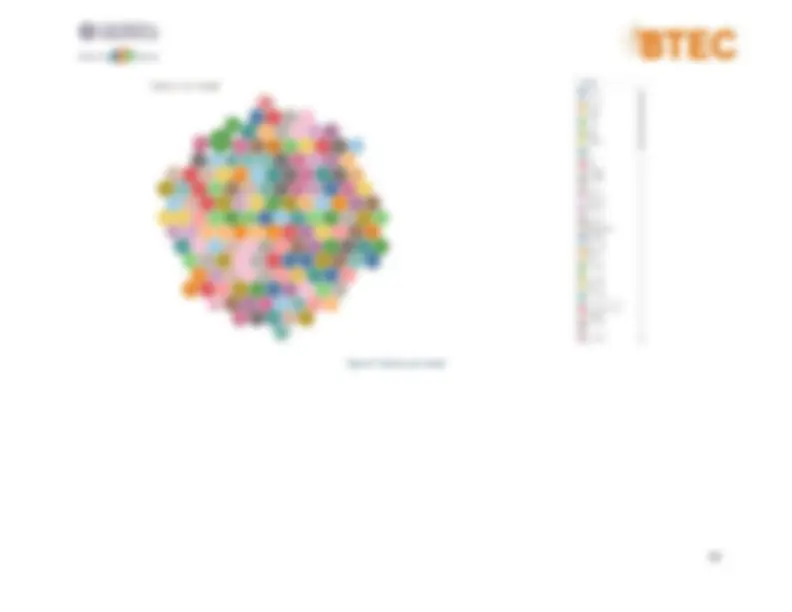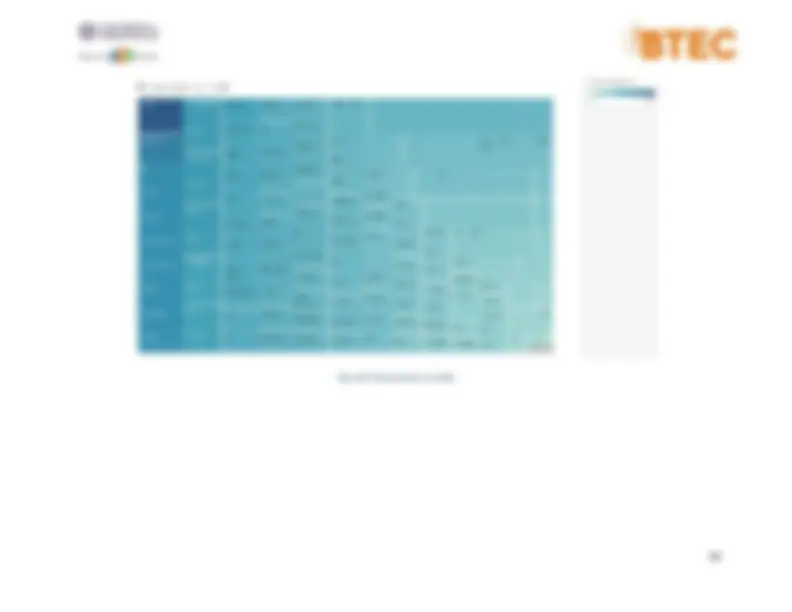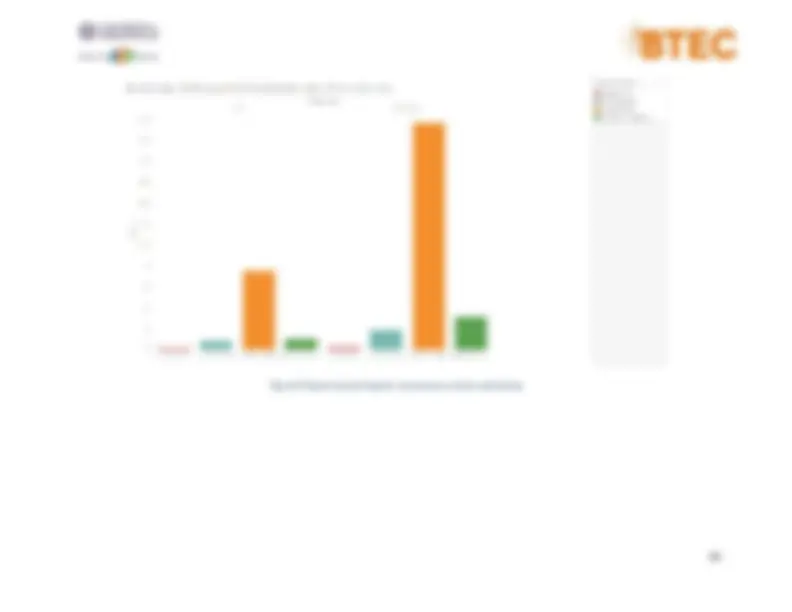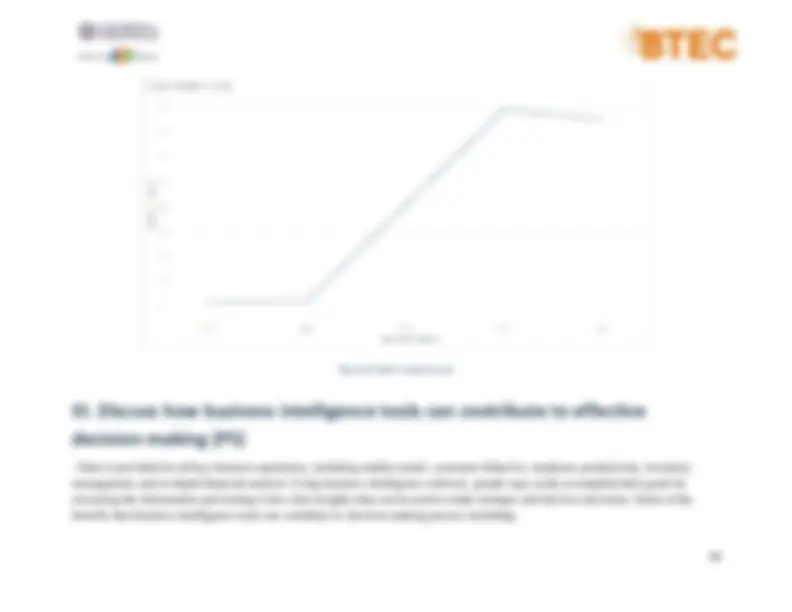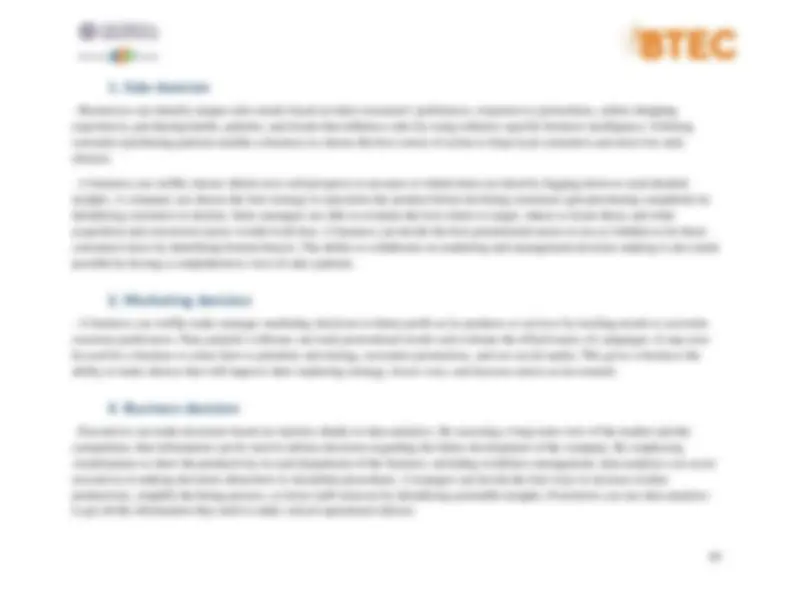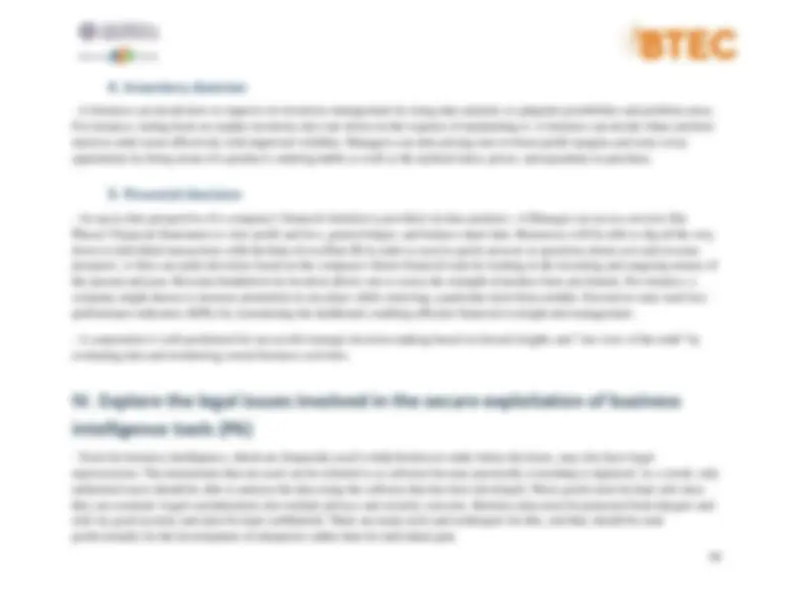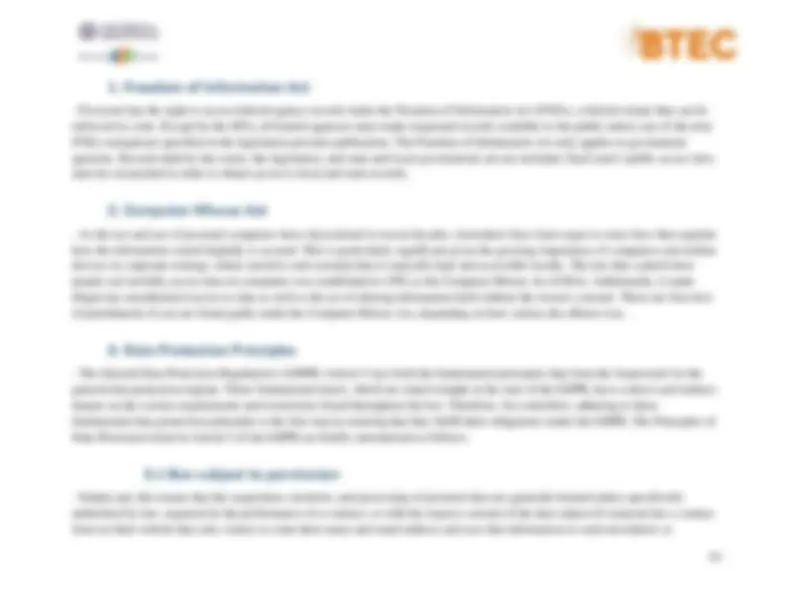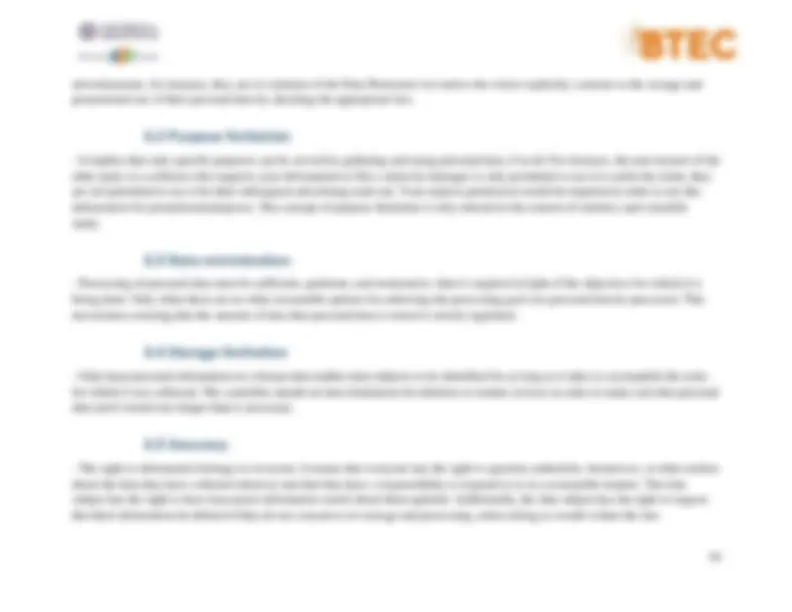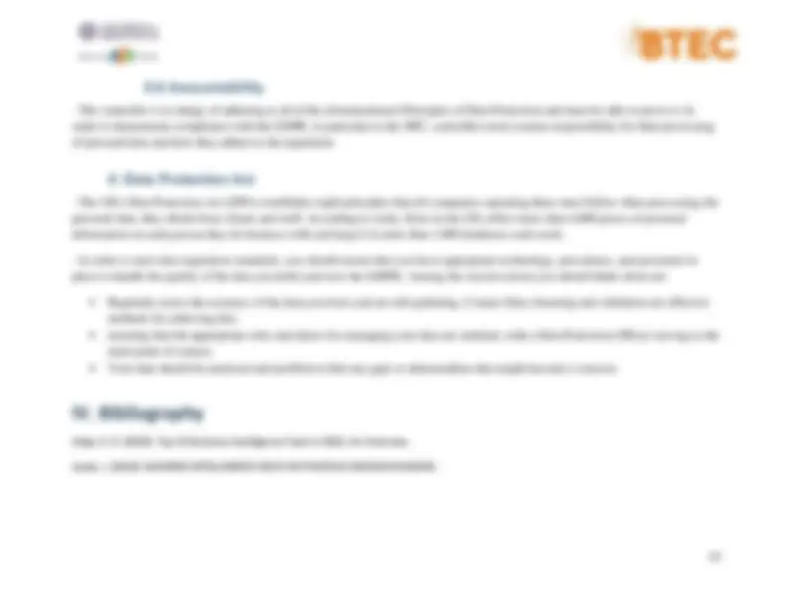Download 1641_Business Intelligence_Assignment 2 and more Assignments Business Administration in PDF only on Docsity!
ASSIGNMENT 2 FRONT SHEET
Qualification BTEC Level 5 HND Diploma in Computing Unit number and title Unit 14: Business Intelligence Submission date 12/26/2022 Date Received 1st submission Re-submission Date Date Received 2nd submission Student Name Mai Tran Tuan Anh Student ID GCD Class GCD0904 Assessor name Phyo Min Tun Student declaration I certify that the assignment submission is entirely my own work and I fully understand the consequences of plagiarism. I understand that making a false declaration is a form of malpractice. Student’s signature Grading grid P 3 P 4 P5 P6 M3 M4 D3 D
Summative Feedback: Resubmission Feedback:
Grade: Assessor Signature: Date: IV Signature:
- I. Determine, with examples, what business intelligence is and the tools and techniques associated with it (P3)......................................................
- Definition
- Techniques
- Tools
- 3.1 Sisense..................................................................................................................................................................................................................
- 3.2 SAP Business Intelligence
- 3.3 DOMO
- 3.4 Datapine
- Example of applying business intelligence into real scenario..............................................................................................................................
- 4.1 Univision.............................................................................................................................................................................................................
- 4.2 New York Shipping Exchange
- 4.3 Stitch Fix
- an advanced level (P4) II. Design a business intelligence tool, application or interface that can perform a specific task to support problem-solving or decision-making at
- Overview
- Build a business intelligence
- 2.1 Build a team.
- 2.2 Establish business intelligence goals with stakeholders
- 2.3 Analyze the availability and infrastructure of the present data
- 2.4 Choose a business intelligence solution
- 2.5 Prepare to put your business intelligence strategy into action.
- 2.6 Training
- 2.7 Implement the end-user interface
- III. Discuss how business intelligence tools can contribute to effective decision-making (P5)
- Sale decision.........................................................................................................................................................................................................
- Marketing decision...............................................................................................................................................................................................
- Business decision
- Inventory decision................................................................................................................................................................................................
- Financial decision
- IV. Explore the legal issues involved in the secure exploitation of business intelligence tools (P6)
- Freedom of Information Act
- Computer Misuse Act...........................................................................................................................................................................................
- Data Protection Principles
- 3.1 Ban subject to permission
- 3.2 Purpose limitation
- 3.3 Data minimization
- 3.4 Storage limitation...............................................................................................................................................................................................
- 3.5 Accuracy
- 3.6 Accountability
- Data Protection Act
- IV. Bibliography
- Figure 1: Business intelligence
- Figure 2: Sisense.............................................................................................................................................................................................................
- Figure 3: SAP Business Intelligence user interface
- Figure 4: DOMO user interface
- Figure 5: Datapine user interface
- Figure 6: Teamwork is very inportant
- Figure 7: Sale by car model
- Figure 8: Horse power by model
- Figure 9: Engine size, fuel capacity, horse power, price by vehicle type
- Figure 10: Car sale by model and manufacturer..........................................................................................................................................................
- Figure 11: Year resale value by model
- Figure 12: Sale in recent launch
2. Techniques
- Companies can utilize a variety of business intelligence methods to gather insightful data for decision-making. Here are some of the most popular BI methods.
- Analytics: Analytics is a business intelligence method that entails the analysis of available data to uncover significant trends and insights. This is a well-known BI strategy since it enables organizations to fully comprehend the data they possess and generate maximum value through data-driven decisions. For example, call centers utilize speech analytics to track customer sentiment, enhance the customer experience, and for quality assurance purposes, to mention a few. Marketing organizations can employ analytics to identify the consumer categories that are highly likely to convert to new customers.
- Predictive Modeling: A BI methodology called predictive modeling uses statistical methods to build models that could be applied to trend and probability forecasts. Using numerous statistical models, predictive modeling enables the prediction of both the value and attributes for a given data item.
- On-line Analytical Processing (OLAP): An approach for resolving analytical issues with various dimensions is online analytical processing. The most significant benefit of OLAP is its multidimensional feature, which enables users to pinpoint issues from various angles. Tasks like budgeting, CRM data analysis, and financial forecasting might all be completed with OLAP.
- Data Mining: A method for finding patterns in large datasets, data mining frequently uses database systems, statistics, and machine learning to do so. Since it ensures proper data architecture, data mining is a crucial step in both data management and pre-processing. Data mining could be used by end users to develop models that highlight these tendencies. For instance, a company may use CRM data to forecast which leads are most likely to purchase a specific service or good. For example, in the banking sector, client risk assessment is used to evaluate whether the client is likely to pay back the loan based on historical data
- Model Visualization: The acquired facts are converted using the model visualization technique into histograms, graphs, charts, and other visualizations that help with accurate insight interpretation.
- Reports: Business users can benefit from BI technologies in the design, scheduling, and generation of performance, sales, reconciliation, and savings reports. Reports generated by BI technologies effectively collect and show data to aid in management, planning, and decision-making. Once the report is created, it can be sent automatically to a list of recipients with the appropriate information on a daily, weekly, or monthly basis.
3. Tools
- In order to make strategic and tactical business decisions, BI tools are all about assisting you in better comprehending trends and gaining insights from data. Here is a list of some of the most used business intelligence technologies that organizations use to generate insights. 3.1 Sisense
- The Sisense BI tool may be a fantastic choice if you lack technical expertise. Because of how user-friendly it is, anyone inside a company can manage, analyze, and display complicated datasets without consulting the IT staff. You can collect information with this tool from a variety of sources, such as Google Analytics and AdWords. Data processing is quicker with this tool than with other BI tools since it makes use of in-chip technology.
- With Sisense's innovative In-Chip engine, you may ask any inquiry and receive a prompt response without having to start again with fresh inquiries. The software's Single-Stack architecture enables you to manage all processes, from data integration to visualization, with this single BI solution, and you can deploy the tool instantaneously. The Single-Stack software of the app lowers the total cost of ownership because you won't need to spend money on data warehouses or visualization software.
- This program stands out for its capacity to rapidly and efficiently pull massive amounts of data from numerous data sources.
- It produces strong dashboards that can be accessed from any device rapidly.
- Finally, the system is easily adaptable to different user levels.
- Disadvantages:
- There might be a less complicated approach for administrators to share dashboards made by numerous users.
- On the mobile platform, the navigation and filtering might be enhanced. 3.2 SAP Business Intelligence
- Machine learning, BI predictive analytics, planning and analysis, and other advanced analytics technologies are all available through SAP Business Intelligence. Applications for data visualization and analytics, reporting and analysis, mobile analytics, and office integration are all included in this enterprise-level software for client/server systems. SAP is a powerful system that provides a wide range of functionalities on a single platform and is designed for all roles.
- SAP business intelligence is a core product that includes several data access instruments. The instruments within SAP BI can be divided by end-user groups. The first group is business users a user group that queries data, while not dealing with the inner structure of the database. The second group is data analysts. These users operate within a database to add meta, explore data, and support queries.
Figure 3 : SAP Business Intelligence user interface
- Pros:
- Whole variety of items linked to business intelligence.
- Graphical user interface that is seamless.
- Sharing features and compatibility with Microsoft Office
- Self-service tools are accessible to a wider user base.
- Integrations of data sources.
- Flexibility.
- Cons:
- License fees that are too high overall.
- Poor platform management and client service.
- It's a cloud-native platform: The only cloud-native BI solution, DOMO combines real-time visualizations, predictive insights, and integrated platform as a service (iPaaS) for data integration.
- Self-service: The platform's self-service BI gives business users the power to filter, segment, and analyze data as they see fit. Technical expertise, which has been necessary to use the majority of prior analytics systems, is not required.
- Drag-and-drop ETL: Any user can extract data from any source, analyze and convert the data, and then load the data into the DOMO platform. Utilizing integration tools, users can transform data with a few clicks, while ETL solutions assist in visualizing data flow, specifying processes, and providing real-time previews.
- User management system: DOMO's user and access management system enables you to create and manage groups with access to particular material as well as welcome new users to the platform. It is suitable for enterprise-wide deployment due to its capability.
- Sharing and teamwork: Buzz, DOMO's fully integrated collaboration platform, enables users to interact with visualizations by adding notes and messages. On any device, users may attach files, share interactive charts and graphs, and speak privately or in groups with other users or team members about them. 3.4 Datapine
- The three primary areas in which Datapine excels are interactivity, customizability, and shareability. It is perfect for businesses of all sizes that require a method for handling a lot of data. Datapine has the advantage of centralizing all of your data into a single visible dashboard. Additionally, dashboards vary by industry. This is advantageous because you may display your data in a way that accurately conveys the knowledge you require. Additionally, you have the option to modify your dashboard. You can modify graphs and charts, alter the color and style, and choose the particular set of data that shows. Your dashboards can also be exported and published by the software, allowing you to distribute them to various teams or departments.
Figure 5 : Datapine user interface
- Key features:
- Autonomous Analytics: The purpose of datapine is to enable any user to see data without assistance from IT. The system provides straightforward drag-and-drop capabilities that don't call for data science expertise. Users can easily use a mobile device to retrieve data, execute ad-hoc queries, and apply strong filters. Advanced computations can also be done by users who are familiar with Excel thanks to the solution. Those who are knowledgeable in SQL can also generate pivot tables inside of Datapine by using the additional unrestricted SQL mode.
- Dashboards: Real-time data or recurring reports can be viewed on dynamic dashboards, which can subsequently be shared with a group of individuals in a safe manner. Users of the solution may simply comprehend data trends and go into the specifics by creating storytelling slides. Your most important data is centralized by datapine so that you can frequently turn to dashboards to aid in decision-making. So that discussions center on the same objectives, a team can share a single dashboard.
4.2 New York Shipping Exchange
- A shipping technology business called New York Shipping Exchange (NYSHEX) is striving to make international shipping easier.
- Challenge: NYSHEX would manually pull data from its proprietary program and numerous cloud apps, then input it into Excel to make sense of overall company performance. Few people had access to the data in this time-consuming procedure, and the engineering team was responsible for fulfilling the majority of report requests.
- Solution: NYSHEX invested in BI, consolidated its data into one system, and provided access to everyone within the organization, enabling users without technical experience to delve further into analysis.
- Results: In 2019, the company more than tripled the volume of shipments it made between Asia and the United States thanks to business intelligence and other initiatives. 4.3 Stitch Fix
- Online personal styling services for apparel and accessories are offered by Stitch Fix. The business customizes clothing goods depending on size, price, and style using recommendation algorithms and data analytics.
- Challenge: The firm wants to lower returns, retain repeat clients, and cultivate word-of-mouth marketing through client referrals to friends and family.
- Solution: Stitch Fix gathers information in BI throughout the purchasing process, so the more a consumer purchases from Stitch Fix, the more the styling staff is able to understand their fashion preferences. To decipher the many personal style elements, the corporation engaged astrophysicists, a complex task that would be impossible without the robust analytics of BI.
- Results: The company, founded in 2011, reported a client base of 3.4 million in 2020 and sales of $1.7 billion in the fiscal year 2020 using business intelligence to profile customers and their preferences.
II. Design a business intelligence tool, application or interface that can
perform a specific task to support problem-solving or decision-making at an
advanced level (P4)
1. Overview
- Business intelligence process includes following steps:
- Data organization and modeling, which prepares data collections for analysis.
- Searching the prepared data analytically.
- Release of other findings, including key performance indicators (KPIs), to business users
- Making use of the data to advise and guide business decisions.
- The usage of actual tools for data processing makes up the majority of the BI implementation. A business intelligence infrastructure is made up of several tools and technology. The infrastructure frequently consists of the following technologies for data storing, processing, and reporting:
- Sources of data.
- Data integration or ETL (Extract, Transform, Load) tools
- Online analytical processing cubes; data warehouse.
- Tools for reporting (BI) and data marts.
- Technology-driven processes like business intelligence primarily rely on input. As front-end tools for working with big data, the BI technologies used to transform unstructured or semi-structured data can also be utilized for data mining.
- You will also have to assemble a team to handle your solution's technical implementation. The team that deploys your business intelligence solution and makes preparations for data storage and access is probably distinct from the leadership team for your business intelligence strategy. The technical team will select the particular technological requirements to get business intelligence up and running, whereas the business intelligence strategy team decides "How will we infuse BI into our business and how will BI effect it?" One is concerned with overall strategy and generating corporate value, whereas the other is concerned with technical implementation. 2.2 Establish business intelligence goals with stakeholders
- Outline specifically how business intelligence will assist each goal with your group of key stakeholders after discussing and prioritizing the business goals you want to advance with your business intelligence strategy. When your objectives are clear, rank them according to their importance or urgency, then choose which to do first. If necessary, you might decide to prioritize your BI initiative by starting with smaller, more manageable goals and working your way up to more ambitious ones. These early minor successes will help executives see the value of your business intelligence approach, and they will also demonstrate to staff members the advantages of using a new tool. Employees and management are more likely to trust and be enthusiastic about data-driven thinking when they observe the success of business intelligence in one area.
- Some questions you can answer in this stage of your strategy:
- What are our key business goals right now?
- What particular ways will business intelligence help each of those objectives?
- Is there a particular issue or situation that requires business intelligence now?
- Do we need to prioritize organization-wide deployment in our strategy or is there a department that needs business intelligence right away?
- What outcomes are we looking for from our quantitative and qualitative business intelligence strategy? 2.3 Analyze the availability and infrastructure of the present data
- Your business intelligence strategy's technological intricacies require your attention. Your technical team will be significantly involved in this conversation, but the executive sponsor and other important stakeholders should also take part to guarantee alignment
and address current business requirements. Since finance and sales data are the most readily available to most businesses, it is frequently simplest to begin by asking these questions in relation to that data. As you evaluate your data processes and availability for each goal or department and do away with departmental data silos, you'll begin to realize just how much data is actually possible to have at your disposal. Your plan will enable you to begin taking advantage of all of your data at last.
- Something you also need to consider in this stage include:
- What information about your goals do you already have?
- Which data and BI-related processes for data storage, organization, access, governance, etc. are already in place? What about those procedures functions or doesn't?
- What BI technology is already in use, and what functions well or poorly?
- What specific fresh information is required to accomplish your goals? What information should be started gathering?
- What outside data sources—demographic or performance—could you use to your advantage? 2.4 Choose a business intelligence solution
- It's time to select a business intelligence solution and set up a data infrastructure that will support you throughout the life of your plan once you have thoroughly evaluated your accessible data and needs. Four key areas should be covered in your infrastructure planning: data collection and administration, storage and capacity, dashboards and visualization tools, and access and governance.
- Data Collection and Management: About the data you need to collect for your business intelligence. You need to calculate how much data you will need, what type of data and how it is going to benefit your project. This stage should be carefully considered as it can take much more time, effort and costly if it is not well-addressed
- Storage and Capacity: A business intelligence consultant or technical business intelligence team will be able to comment on the advantages and disadvantages of each storage option in relation to your company's objectives. Consider a solution that will enable you to scale your storage as the amount of data in your firm increases as you plan out your initial storage expenditure and capacity.
- Data Visualization Tools and Dashboards: o Any effective business intelligence plan must include data visualization and visual analytics dashboards for the delivery of information. You can determine which dashboards and visualization tools are best for your organization's


